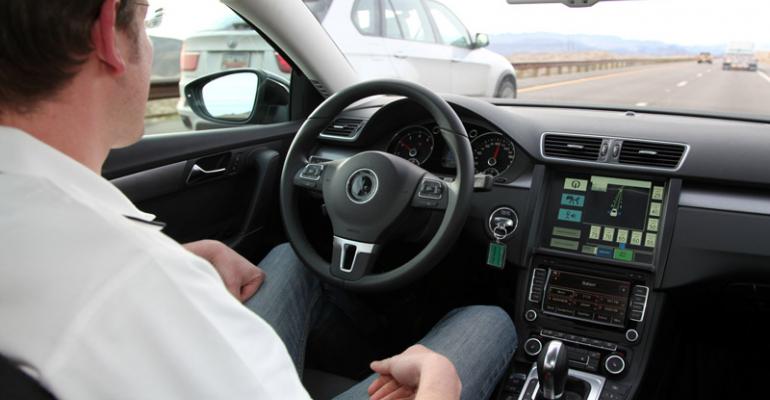PARIS – Continental, the first supplier to have an autonomous car licensed in Nevada, agrees to work with BMW for two years to develop a robotic vehicle suitable for traveling on freeways.
Engineers from the two companies expect to define the prerequisites for autonomous cars that could drive themselves on limited-access highways sometime around 2020.
“Driving cannot be automated overnight,” says Elmar Degenhart, chairman of the executive board of Continental. “It is much more a gradual process, stretching out over a period of over 10 years.”
The German auto maker and supplier intend to build several prototypes to analyze the requirements of freeway driving, including interchanges, toll gates and work zones. Tests will be made on German autobahns as well as freeways in other European countries.
At the Detroit auto show in January, Degenhart said the basic technologies required already are developed, including “long- and short-range radar sensors, stereo and monochromatic camera systems and sensor fusion.”
By 2016, Continental’s customers will begin using low-speed autonomous driving in traffic jams, for instance, but that full high-speed automatic driving could be as far away as 2025, he says.
Developing a safe architecture to account for any malfunction is one goal of the BMW accord. Continental says it will help develop functions to do basic research under BMW's guidance.
The supplier has more than 1,300 employees working on the basic technologies needed for automated driving, such as adaptive cruise control and emergency brake assistance.
Continental also has built automated cars. In 2011, as part of the European Union’s research project “HAVEit,” the supplier developed an automated assist system for driving in traffic tie-ups and around road work.
Last year, the company obtained a license in Nevada for its prototype robotic car, which to date has driven more than 15,000 miles (24,140 km) on public roads.
Degenhart says a significant percentage of consumers already are prepared to spend about $3,000 for automated functions under certain conditions.
Continental and BMW also have been cooperating on another German research project, SimTD, which is dedicated to improving highway safety by enabling vehicles to better communicate with each other and the existing traffic infrastructure in the central Frankfurt-Rhine-Main region.
The massive program, involving auto makers, universities and government agencies, began in 2008 and focuses on collecting traffic data from 120 test vehicles piloted by everyday drivers as well as experts representing different ages and genders in various scenarios, from congested cities and urban highways to neighborhoods and 2-lane country roads.
The driving portion of the study kicked into high gear last June, when the 120 test vehicles combined began logging 31,070 miles (50,000 km) a week.
SimTD, which is nearing its conclusion, allows researchers to monitor traffic situations, identify events and further develop navigation systems and traffic-jam alerts – all important aspects of autonomous driving.
In central Frankfurt, several major intersections have been equipped with ITS Vehicle Stations to transmit relevant data to vehicles in the area, as well as the established traffic infrastructure. For instance, researchers will determine if traffic signals can be better programmed for smoother vehicle flow.
Continental supplies the car communications box installed on the test vehicles.
– with Tom Murphy





